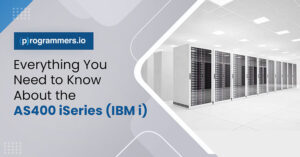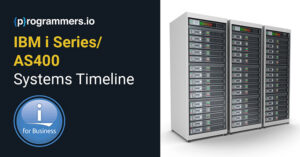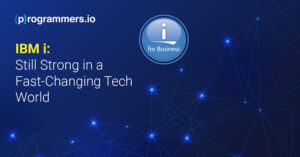Upgrading to IBM i 7.4
IBMi is always at the rescue of all the mission critical applications. The latest version, IBMi 7.4 was released in March 2019 having extravagant features. From database to security and application development, IBMi 7.4 version is enhanced in every sense, making it the most widely used OS for Power systems by almost all the major organizations. Switching from the older versions to this new one is beneficial and equally complicated. If you are planning to switch, ensure that you have proper guidance.
Planning and strategizing
The set flow of the operating system upgrade is-HMC, FSP firmware, then IBMi and LIC. License keys are very important, before planning for up-gradation be assured to have all license keys for the operating system. The third-party vendors you choose should also be ready for the level you are upgrading to.
Also there is a requirement for preventive service planning (PSP) information and PTFs available online. So, check and research thoroughly for the same. Backups and prior information for very critical data that can be deleted while the up-grade should be planned beforehand. There are possibilities that the technologies you may have used in the past might not be supported on the upgraded OS and hardware levels. For IBMi 7.4, have a look at these links for software and hardware supported by it.
Executing the Upgrade
Execution phase is the next one in the process of up gradation. Points to remember before and during execution:
- Before going into the execution phase, make sure to verify your license for your IBMi software
- Besides licensing, the other thing to focus upon is to set up your image catalog so that you do not have to hop from one DVD to the other
- You will also be asked to dedicate proper space for the LIC. You will not be allowed to upgrade with temporary PTFs, so make sure to apply permanent PTFs
- Record and document all the changes you make to the operating system components, including items like system values, print files, and physical files, which are stored in the operating system
- Create a CLP with any customization and run the CLP after the OS upgrade. You will have to create an image catalog (CRTIMGCLG) and build a list of what to upgrade and specify the order during this process.
- Power down the system (PWRDWNSYS) and direct the process to your image catalog. The system will boot from the image catalog and install the upgrade without your intervention. This is the time-consuming part of the actual upgrade.
Post Upgrade
Check and validate the installation along with QSYSOPR for messages that you might have missed. Run the program that has your system values and other OS differences. Once the upgrade is over, you should back up the operating system and save system data.
Conclusion
Upgrading any operating system is never easy and so is with IBMi 7.4. Upgrading is necessary as every system needs it to utilize the latest technology as and when required. Whether you’re upgrading IBMi, AIX, Windows, or any other operating system, it takes planning, strategizing, validation and accuracy. To avoid any type of issues, glitches or data loss it is recommend that you plan before you act. And above all, keep proper backups. Try to involve a trustworthy third party vendor, or partner with a renowned IT service provider or engineer who can guide you at each and every step.
How can we help you?
We have hundreds of highly-qualified, experienced experts working in 70+ technologies.









